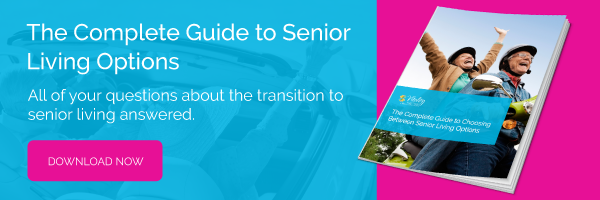The transition from a home you’ve known for many years to a new senior living community can be emotional. Older adults moving to new surroundings may experience a variety of feelings ranging from excitement to sadness. It’s important to remember that this reaction is perfectly normal.
The key to making a smooth transition to senior living is accepting those feelings and taking steps to ease into your new life.
Calm Uncertainty About the Move by Talking it Out
Moving to a new home is a major change for people of all ages. For an older adult who’s making a transition from home to senior living, there’s an added layer of concern. Some fears may arise because of persistent myths about senior living. Talking it out can help.
And for adult children, there’s also a layer of concern about a parent’s move to senior living. Caregivers may experience apprehension, guilt, and uncertainty themselves. Again, these feelings are natural and it helps to talk through them.
Steps You Can Take to Ease the Transition to Senior Living
Moving to a completely new environment can be overwhelming. Encouraging your senior loved one to share their feelings with family members can be helpful. Another good way to make the transition go more smoothly is to get to know the new community before moving day arrives.
Here are four ways to do just that:
- Go for Another Tour. First and foremost, you should tour any community you’re considering for your new home. Ideally, this is done during the decision-making stage. But it helps to visit again and spend more time there after the decision to move has been made. Older adults might find the physical part of their new community overwhelming. Visiting and getting to know their way around a little before moving day can help reduce anxiety.
- Attend Activities and Events. One aspect of senior living that many new residents look forward to is access to a wide range of activities and special events. Check the weekly calendar at your senior loved one’s new community and choose a few programs you can attend together. Then call the community to let them know the two of you would like to join in the fun!
- Go for Lunch or Dinner. Getting to know a few residents will also help make the transition from home to senior living a little less intimidating. And what better way to get to know the new neighbors than to go for lunch – or maybe even dinner? Meals tend to be very social occasions in senior living communities!
- Plan Ahead. Before moving day, sit down with a team member at the new community to review what events and activities are planned for the first few weeks after your senior loved one’s move. Whether it’s a Yoga for Seniors class or a trip to an art museum, there’s something for everyone. And helping your senior loved one connect with those activities can ease feelings of loneliness after the transition.
You can also set up a visitor schedule for loved ones. This will help ensure that your family member has a familiar, friendly face to visit with each day. And avoid having too many guests some days and none on other days.
You Don’t Have to Make the Transition Alone
If you’re currently in the process of exploring the options for your new chapter in life or for a senior loved one’s next step, we can help. The experts at Vitality Senior Living are available to answer your questions and help allay your concerns. Call us at (615) 538-3200 or contact us online.




